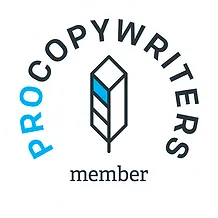When I work with fresh new copywriters, the first task is always a process of unlearning. Through school and certainly through university, people develop an academic style that has no place in copywriting. As someone who has written in that style a lot, let me be the first to say it’s overwrought, confusing, and needlessly complex.
Worse, it’s all about the content and the writer – not about the reader. Put it this way: in academia, everything we write is about showing how clever and insightful we are. When it comes to copy, nobody cares. It’s not about you. It’s about everyone except you, from your clients to their customers.
That’s why, as my kids get older and begin to face situations where they’ll need to write (an important work email, a cover letter for a job, etc), here’s what I’m hoping they’ll leave behind.
#1 More adjectives = better writing
In those middle years of primary school where creative writing starts to flourish, there seems to be an undue emphasis on what I’d called stacked adjectives: just slamming as many as possible down. It’s not always expressed verbally, but it’s definitely rewarded with praise and good marks.
In copy, one of the things we really want to be is active. We need to keep the energy up and the pace moving, but multiple adjectives side-by-side slow things down. Instead, tomorrow’s writers need to learn to be more selective in their adjectives (and adverbs) – but make the ones they include super impactful.
It’s the difference between:
- “There’s a faster, easier, more flexible way to order.”
- “We’ve made ordering effortless.”
One useful technique is to strip out the adjectives that describe something and, instead, think about the emotion or feeling it enables. This is a powerful way to make writing feel evocative and colourful without cluttering it and slowing the reader down.
We need to keep the energy up and the pace moving, but multiple adjectives side-by-side slow things down.
#2 There’s pride in length
Even back when I was at school, being able to write lots of words really fast was a badge of honour. I can remember school friends being celebrated because they’d managed to write four pages in the lesson – with little to no regard as to whether they were, you know, absolute dogshit.
It was there at university, too, with estimated or minimum word counts that we needed to hit. Cue filling out the empty space by removing contractions, adding random clauses, and going off on tangents. You might remember all-time classics like ‘If we look at the dictionary definition…’ from my own university let’s-pad-this-out repertoire.
Out in the real world, the very opposite is true. If you can achieve what you need to achieve in a single sentence, you should totally do that. There’s a place for long, sprawling pieces of writing – but only when that word count is entirely justified by the density of your content.
With copy specifically, I like to think of the formula for pressure: force divided by area. If you’re writing persuasively in a smaller surface area, your writing is naturally going to be more powerful.
#3 It always goes beginning, middle, then end
Structure is one of the hardest-to-perfect elements of writing. It’s difficult to know where to come in and where to get out. Only natural, then, that we cling to that classic ‘beginning, middle and end’ structure. It’s the one we learn at school; it’s there in the films we watch, the books we read, the games we play, and the way we codify events in our own lives.
But this three-part structure tends to lead to a fluffy, overly long introduction before you get to the meat of your story. It’s only logical to begin writing with some context and background – but who has time for that?
Instead, everyone should be encouraged to shuffle that structure to meet their own goals.
If I’m selling you some pens? Maybe I start with the end: a description of how your life is better with a great everyday carry. That’s the part that gets you excited, so that’s the first thing I tell you.
If I’m writing an email to a colleague? Maybe I start with the middle: the practical steps we need to get done. And only then do I step back to explain why we need to do them (the beginning) and how things will get better if we do (the end). It means the important stuff is covered early, with the wider context and detail there to read if you feel like it.
